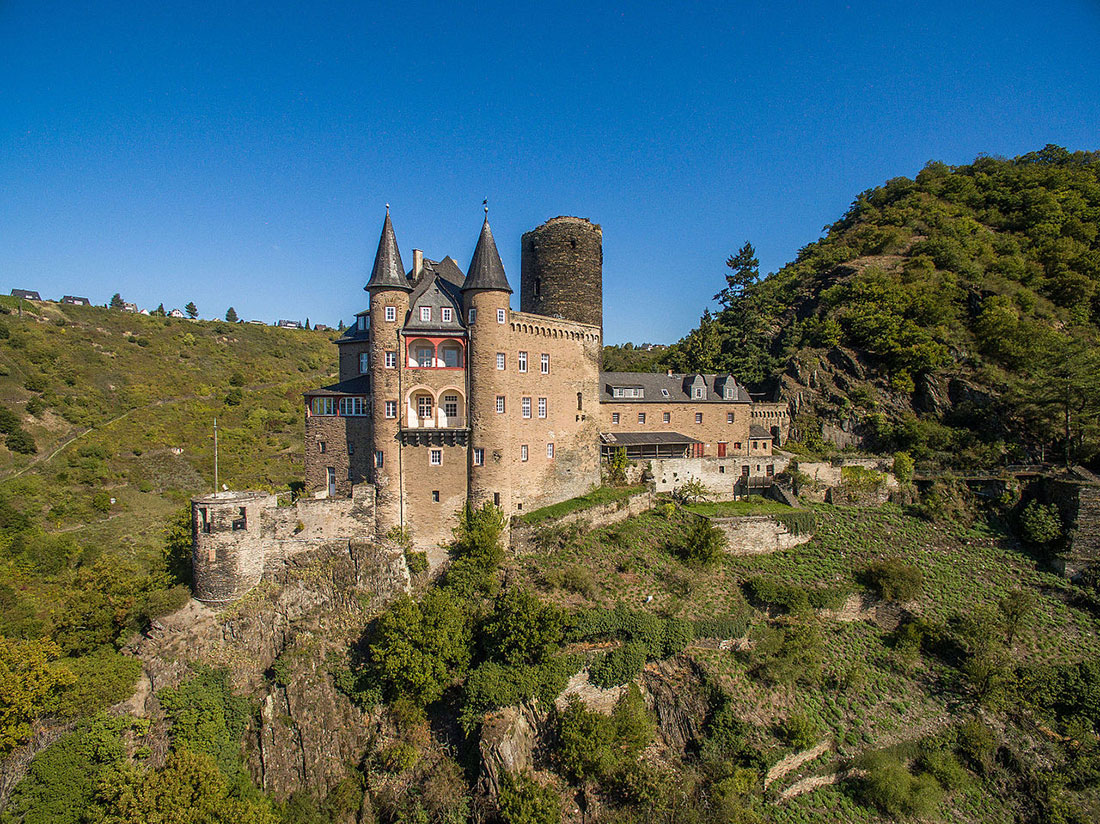The castles of the Upper Middle Rhine Valley are one of the most picturesque places in Germany. In 2002, the Rhine Gorge was included in the UNESCO World Heritage List due to its unique combination of geological, historical, cultural and industrial reasons. For just 65 kilometers between the cities of Koblenz and Bingen, on the hills above the Rhine River, there are about 40 defensive structures, one of which is Katz Castle, which is located near the city of Sankt Goarshausen in Rhineland-Palatinate.
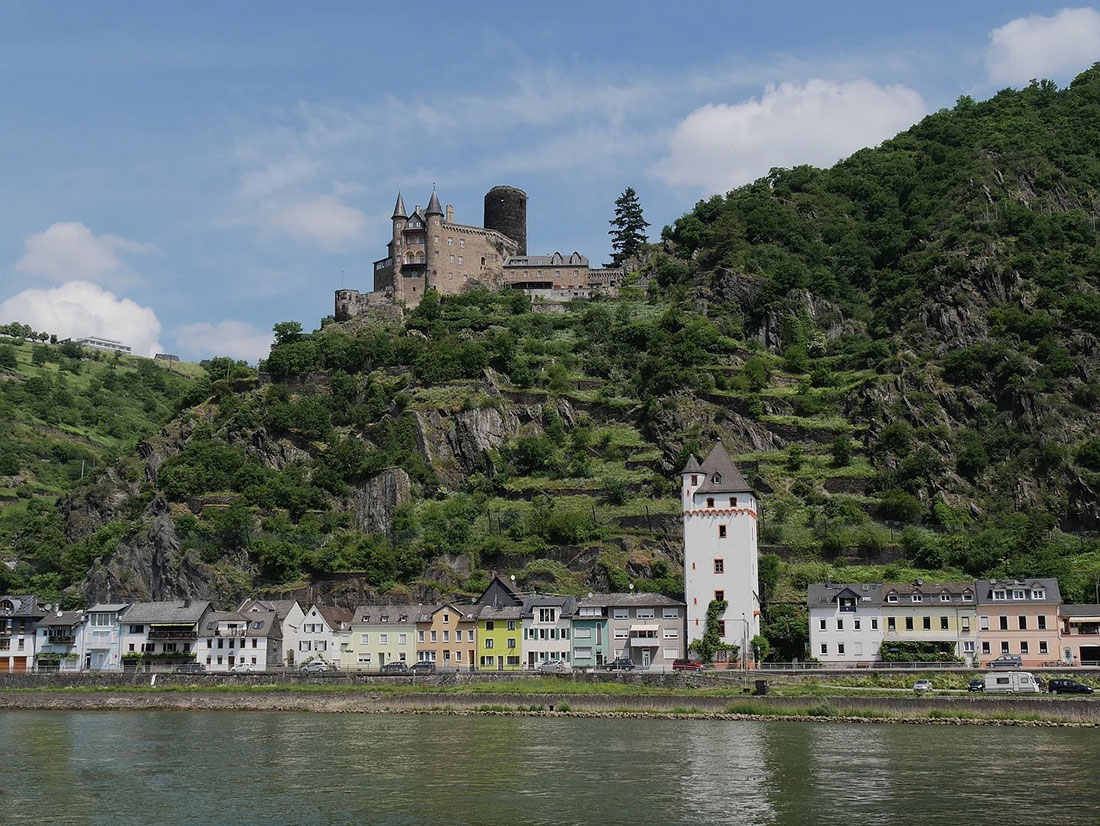
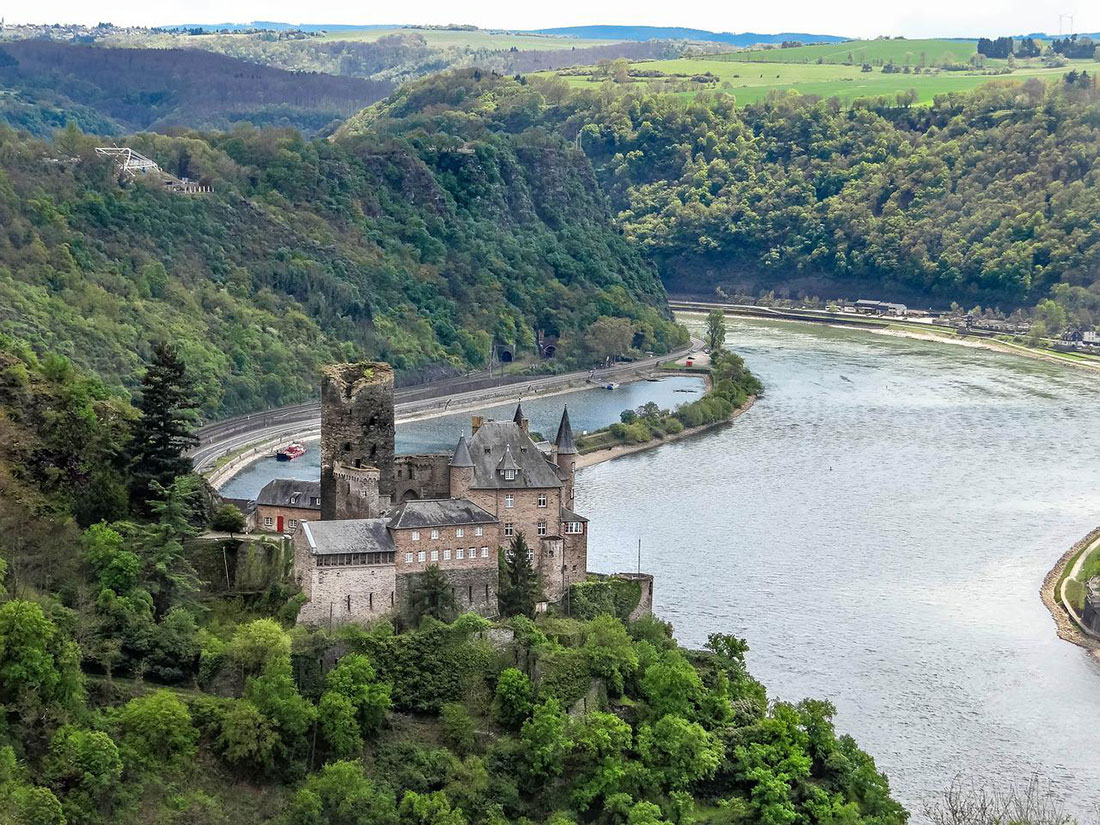
Katz Castle was built by Count Wilhelm II von Katzenelnbogen in the second half of the 14th century. The fortress was used as a military base to protect the Reinfels castle. Together they formed a fortified bastion, where they collected tolls for the passage of ships on the Rhine.
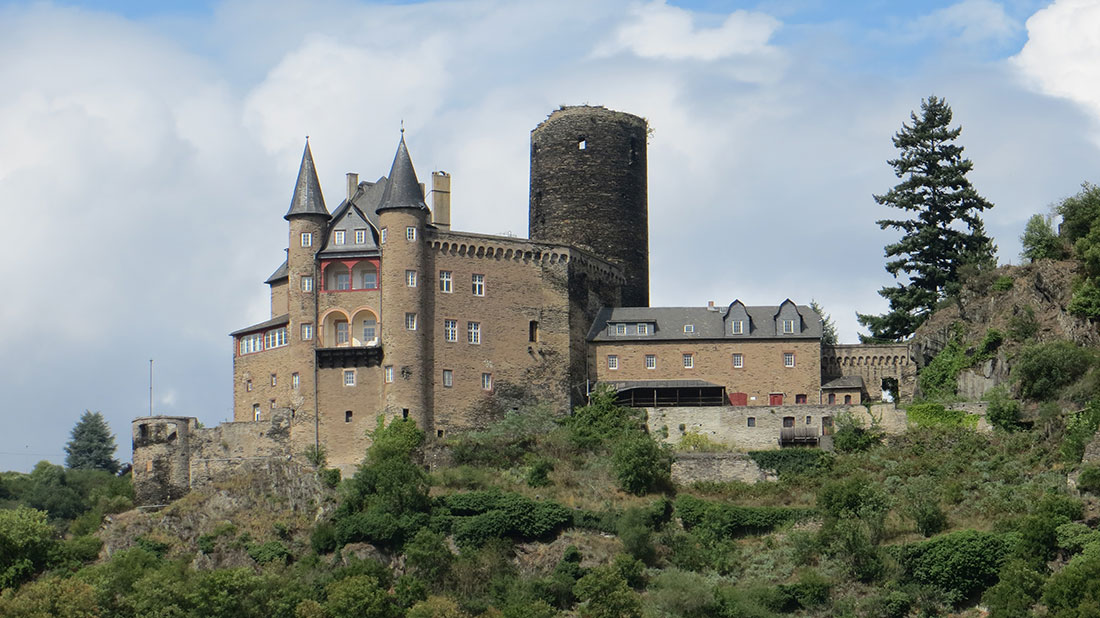
The reason for building the castle was the ongoing conflict between the electors of Trier and the counts of Katzenelbogen. The locals gave the new outpost the name Katz (Cat). There is a special symbolism in this: right opposite stands the castle of the Elector of Trier, which is called the Mouse
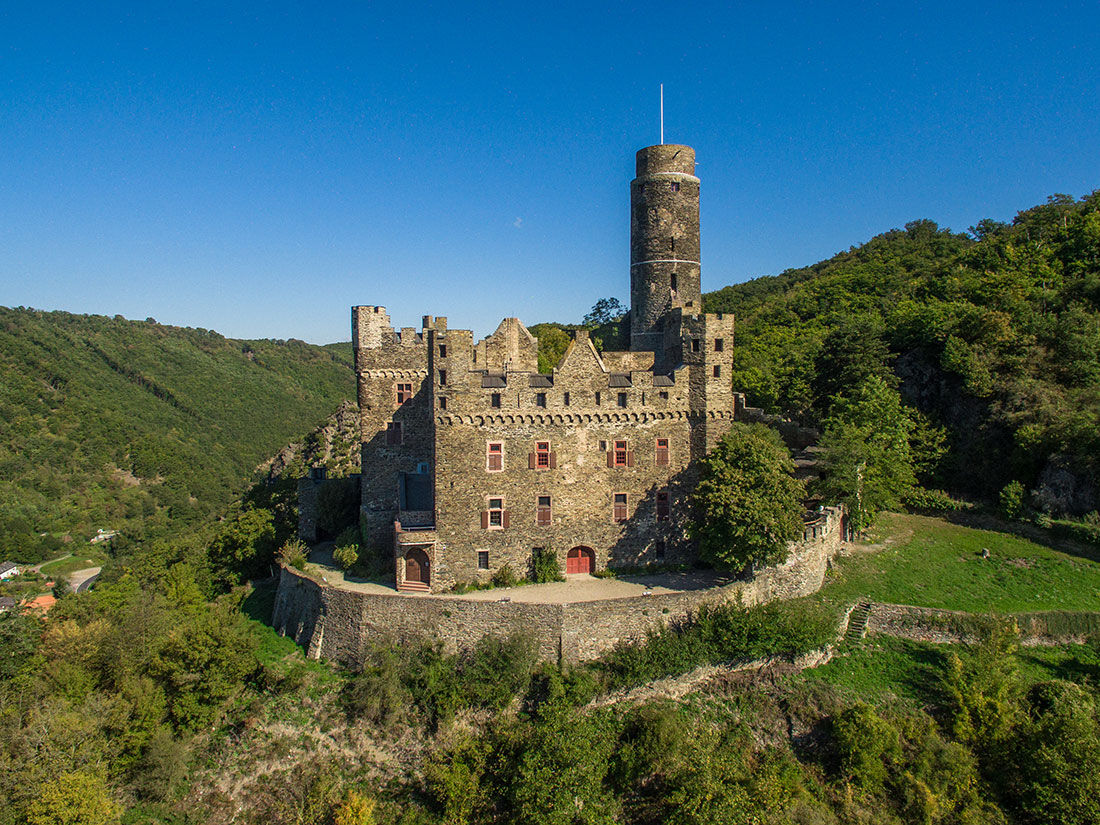
The castle of the counts of Katzenelnbogen, one of the most powerful families of medieval Germany, really looks like a cat ready to catch his fowl – in this case, the fee that was collected for passage along the Rhine. Napoleon was the first to destroy this imposing castle complex, blowing it up in the early 19th century. Only the fortress remained intact.
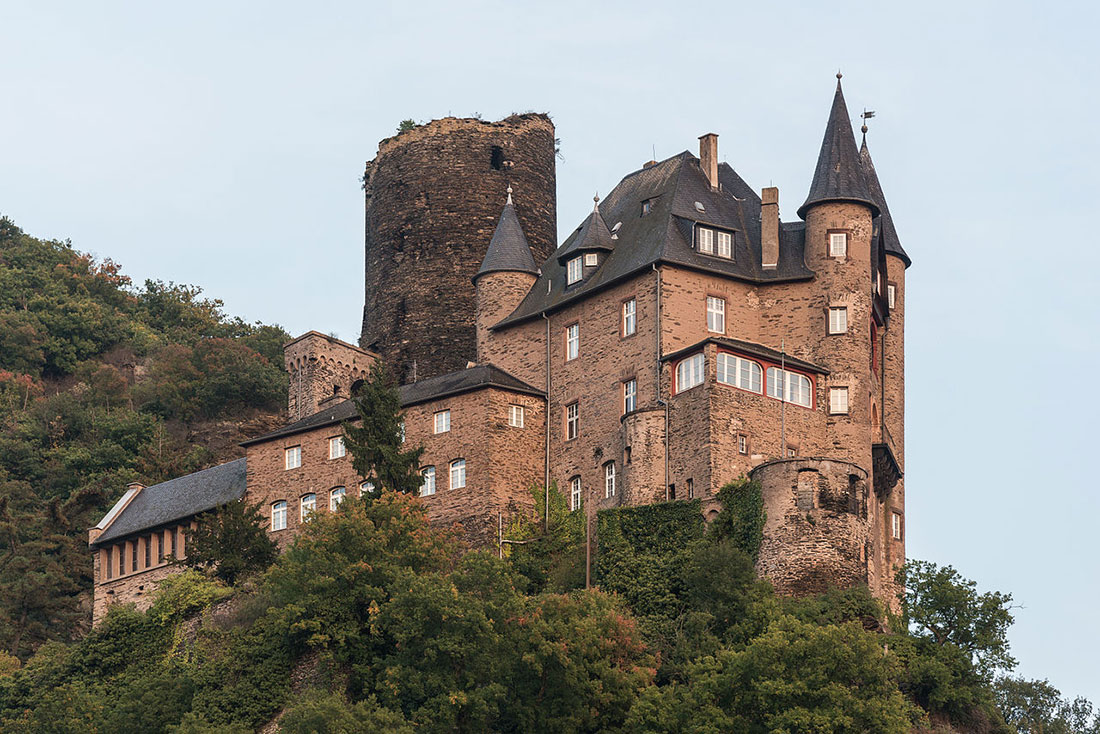
Due to the well-chosen location on the top of the cliff, Katz Castle could not be captured from the valley
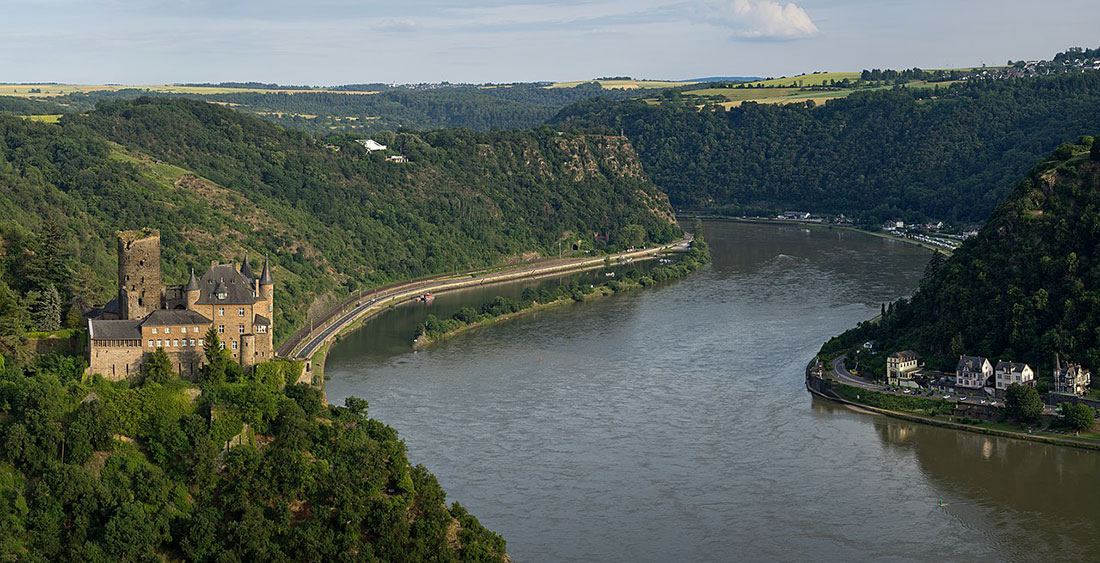
When the Katzenelnbogen family died out in 1479, their county, including Katz Castle, came into the possession of the Landgraves of Hessen. In the following centuries, the castle became a bone of contention between the Darmstadt and Kassel family lines. Thus, it was besieged and partly destroyed in both 1626 and 1647. Over the years of sorting out the relationship, the fortifications of the castle and its firing positions were significantly expanded.
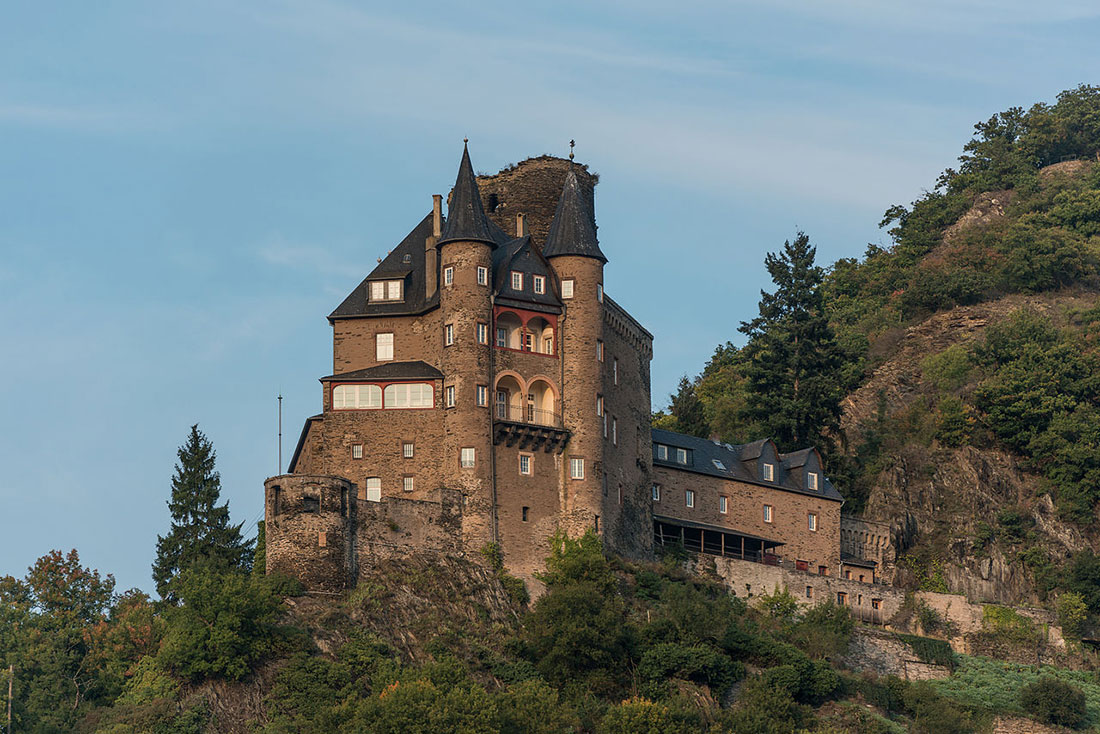
The castle was badly damaged again in 1692, when the troops of King Louis XIV of France laid siege to Rheinfels Castle, located on the opposite bank of Rhine.
During the Seven Years’ War, the French captured the castle in 1758 and held it until 1763. In 1806, Emperor Napoleon ordered the Katz Castle to be blown up. The ruins of the fortress passed into the possession of the Duchy of Nassau.
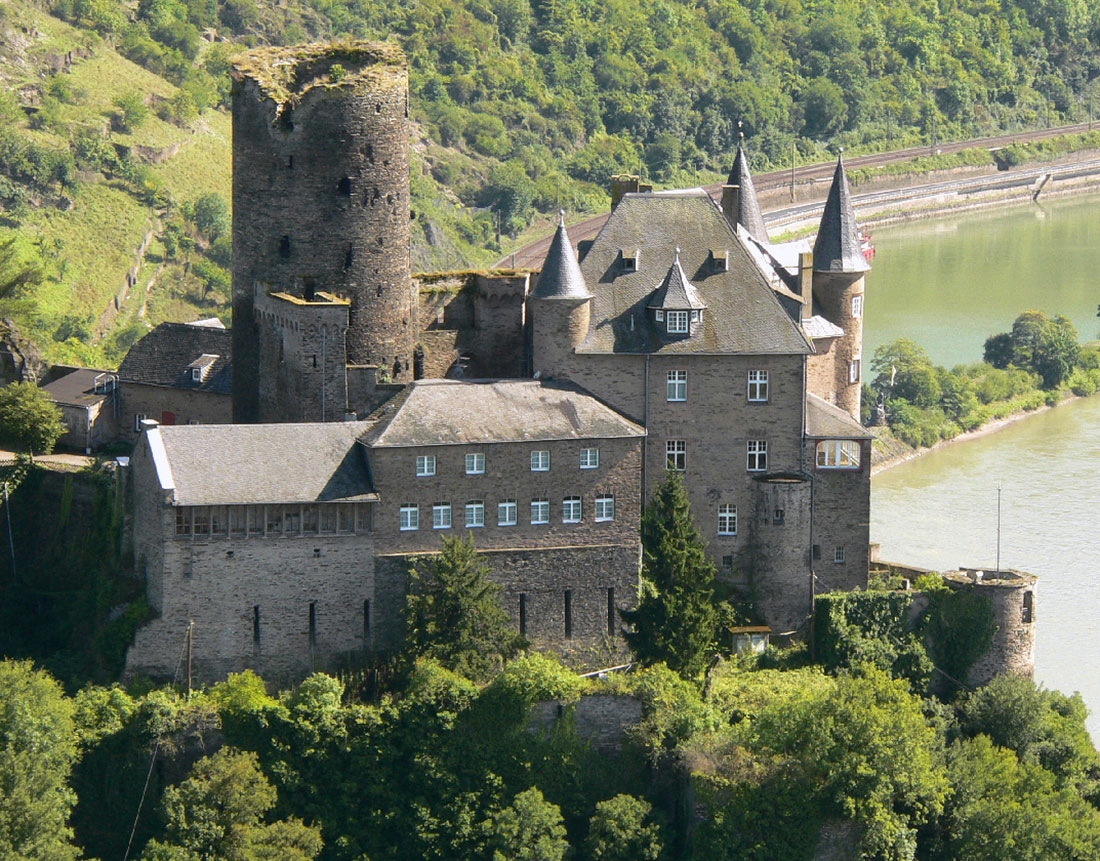
In 1896, the head of the administrative district of Sankt Goarshausen bought the ruins and ordered a Cologne architectural firm to rebuild them in a modern style based on medieval motifs. Only the forty-meter tower, as well as parts of the fortress wall and the outer fence, remained truly medieval. The owners sold the castle in 1928.
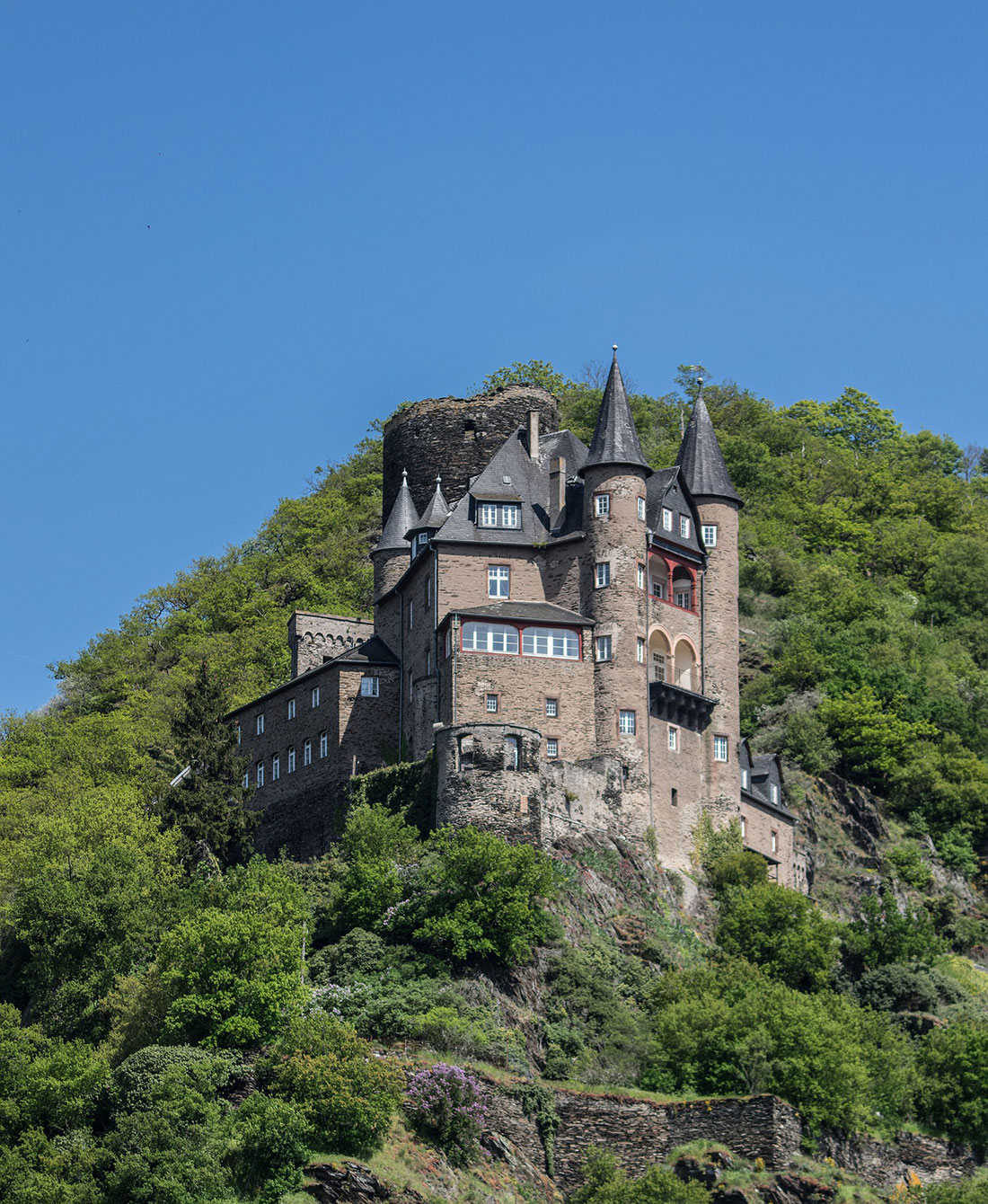
From 1946 to 1951, the castle housed a secondary school. Since 1989, Katz Castle has been privately owned by a Japanese citizen. Once a year, on the occasion of the Rhine in Fire Festival, the castle is the center of attention: fireworks are launched from here. There is a hotel on the territory of the complex.
